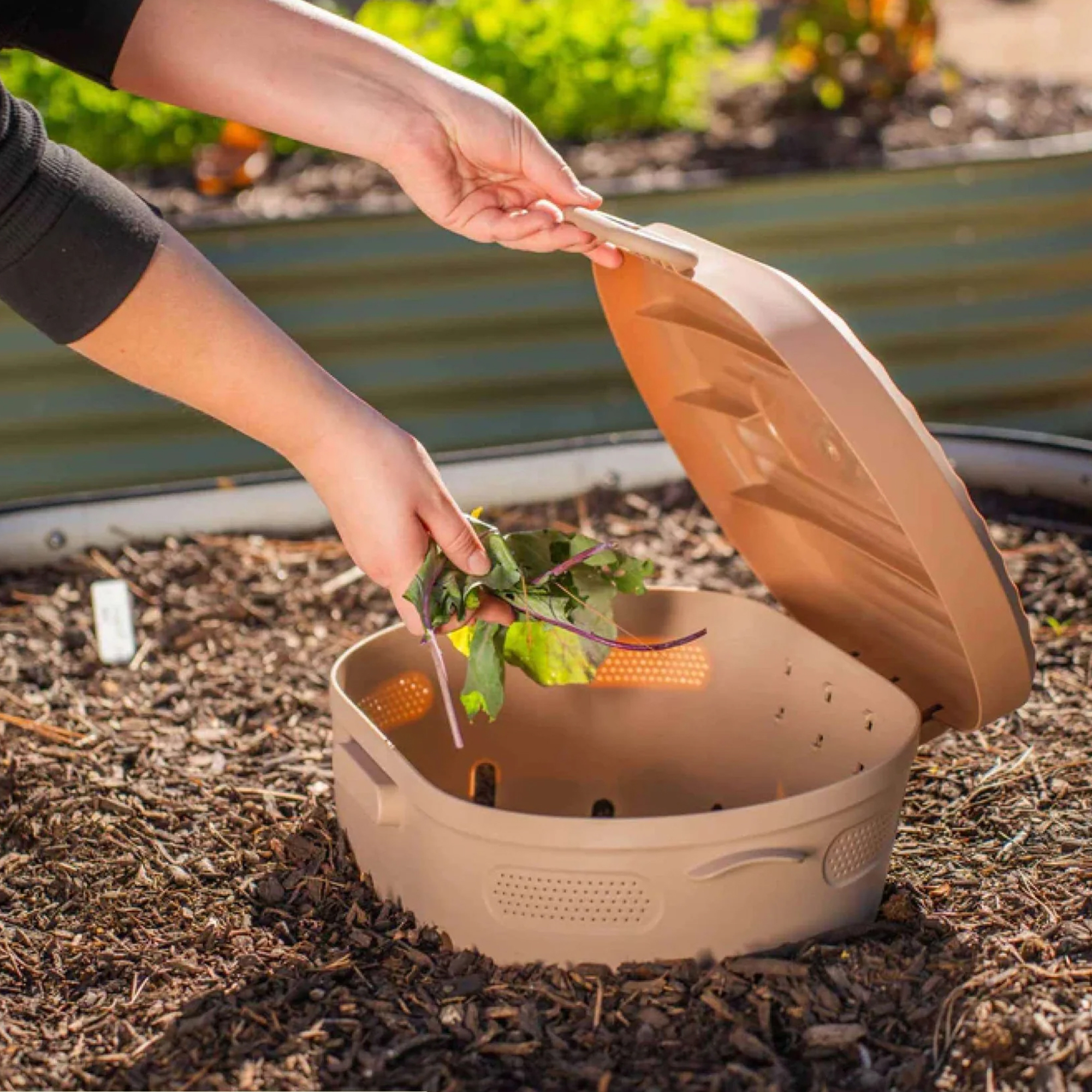10 Common Composting Problems That Can Spoil Your Garden Gold – Plus Easy Fixes
Learn how to troubleshoot common composting issues before they ruin your stash – from bad smells and bugs to materials not breaking down as they should.
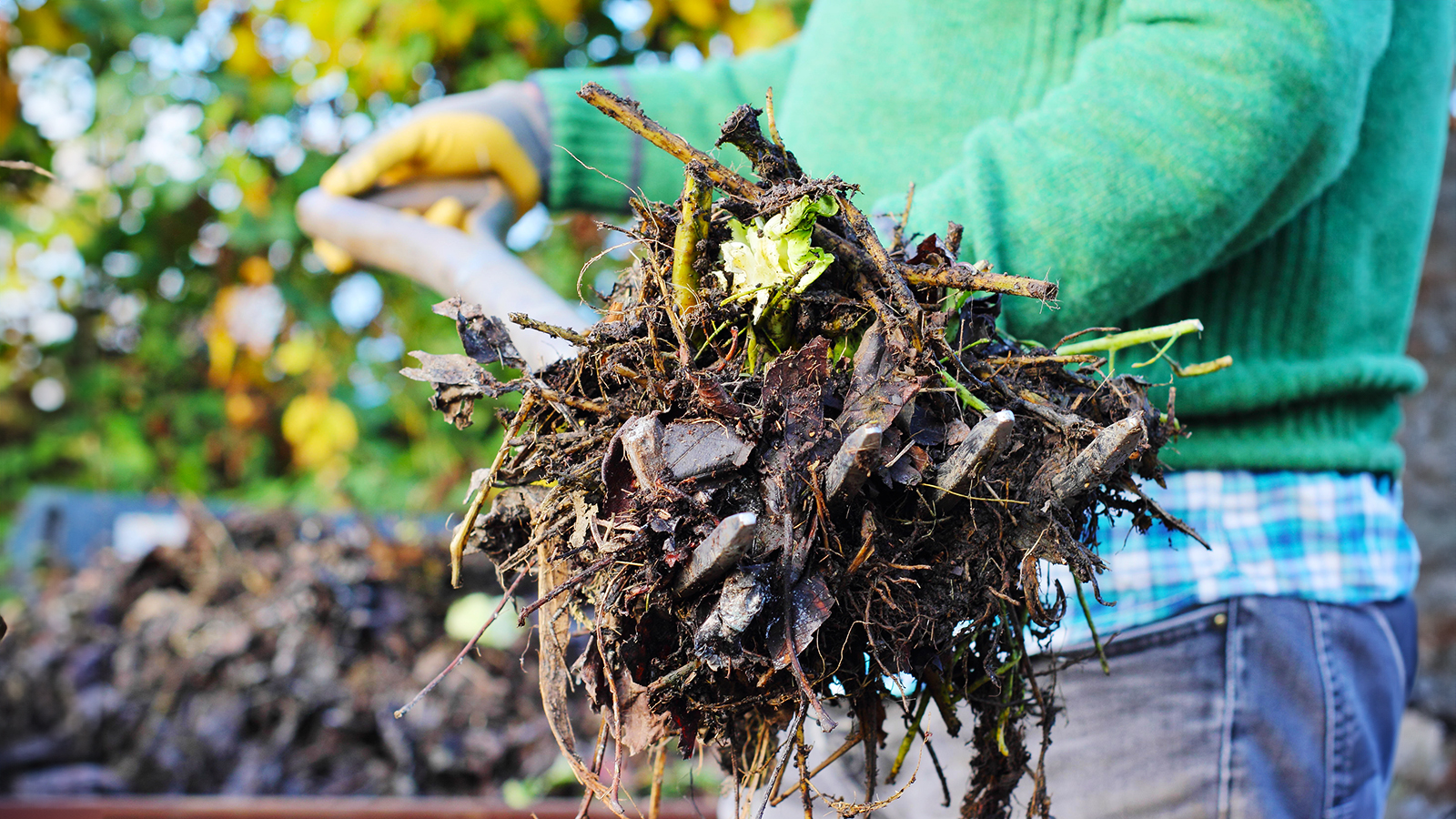

The benefits of a backyard compost pile or bin are well known by seasoned gardeners, but sometimes achieving the right mix for that finished “black gold” can be tricky. If the pile is open, it can be derailed by too much or not enough rain, critters, lack of microorganisms, or cool weather. We can cause problems too by adding inappropriate materials, or not watering or turning the pile.
Keeping your compost pile in balance will eliminate many problems before they start. One of the first rules of learning how to compost at home is getting the right mix of compost greens and browns. Adding the brown material at 50 to 75 percent of the pile and green material at 25 to 50 percent will go a long way toward simplifying the process. In addition, turning the pile twice a month and monitoring the moisture level will ensure the pile can supply oxygen and water to the billions of microorganisms at work.
Get it right, and composting will allow you to transform kitchen and garden waste into fertile compost that will enrich your garden soil and improve its structure and texture. Even if you have to troubleshoot a few problems along the way, it's still a project worth pursuing. Here are some common issues you may encounter while composting and ways to fix them.
1. Compost Smells Bad
If the compost has a rotten egg smell, it could be overly wet, or the oxygen level is low or nonexistent. When that happens, the pile becomes anaerobic instead of the desirable aerobic, which needs oxygen. Anaerobic bacteria don't require oxygen to survive and will do the work, but very slowly and with an unpleasant odor.
To fix the compost smell, reduce the moisture and increase the oxygen. Do this by turning the pile while adding dry material such as shredded newspaper, leaves, or straw to absorb some of the moisture. If too much rain is the problem, cover the pile or bin with a tarp till the rain subsides.
If the odor smells more like ammonia, there is an excess of nitrogen in the pile. Correct the balance of browns and greens by adding more carbon materials to the pile, such as chopped wood chips, sawdust, or newspaper. If you can, spread out the pile to allow the ammonia to evaporate.
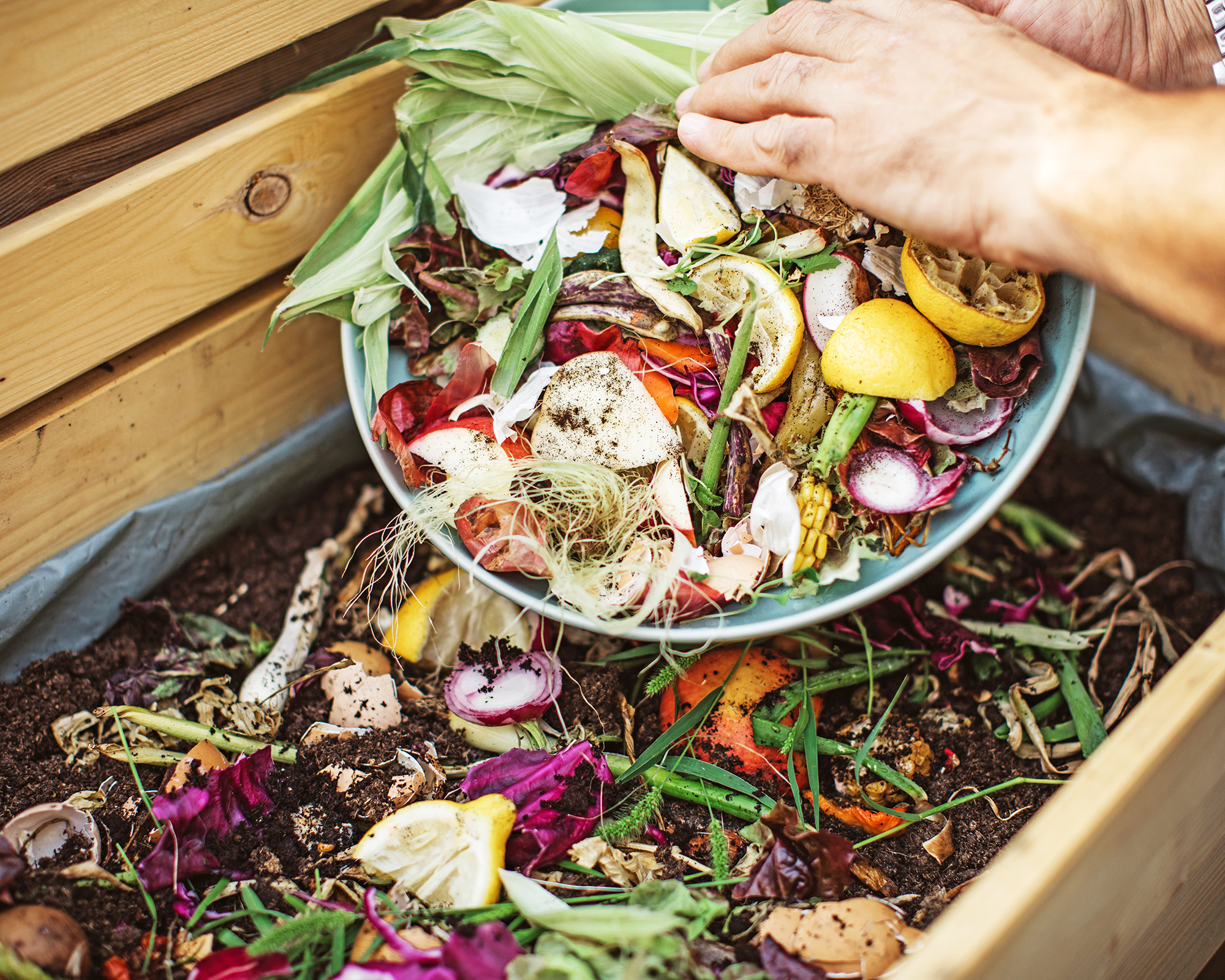
2. Pile Doesn’t Heat Up
Hot composting, where the pile is maintained at a higher temperature, is much more efficient than cold composting and breaks the materials down more quickly, killing many weed seeds and pathogens in the process. However, if the pile doesn’t heat up to the optimal compost temperature, there could be several issues at work. It could mean a lack of oxygen, a lack of nitrogen, a lack of moisture, the pile is too small, or there aren’t enough microorganisms.
Sign up for the Gardening Know How newsletter today and receive a free copy of our e-book "How to Grow Delicious Tomatoes".
First, check the moisture level in the pile by inserting your hand inside the pile in several places. If it is dry, add water via the hose and turn the pile in case lack of oxygen is a contributing factor. If the pile still doesn’t heat up, add more green material such as manure to boost the nitrogen.
If the pile is less than 3 cubic feet (0.08m3), it doesn’t have enough fresh material to start cooking. Add more browns and greens to achieve the desired size. Also, make sure the microorganisms in the soil can reach the compost.
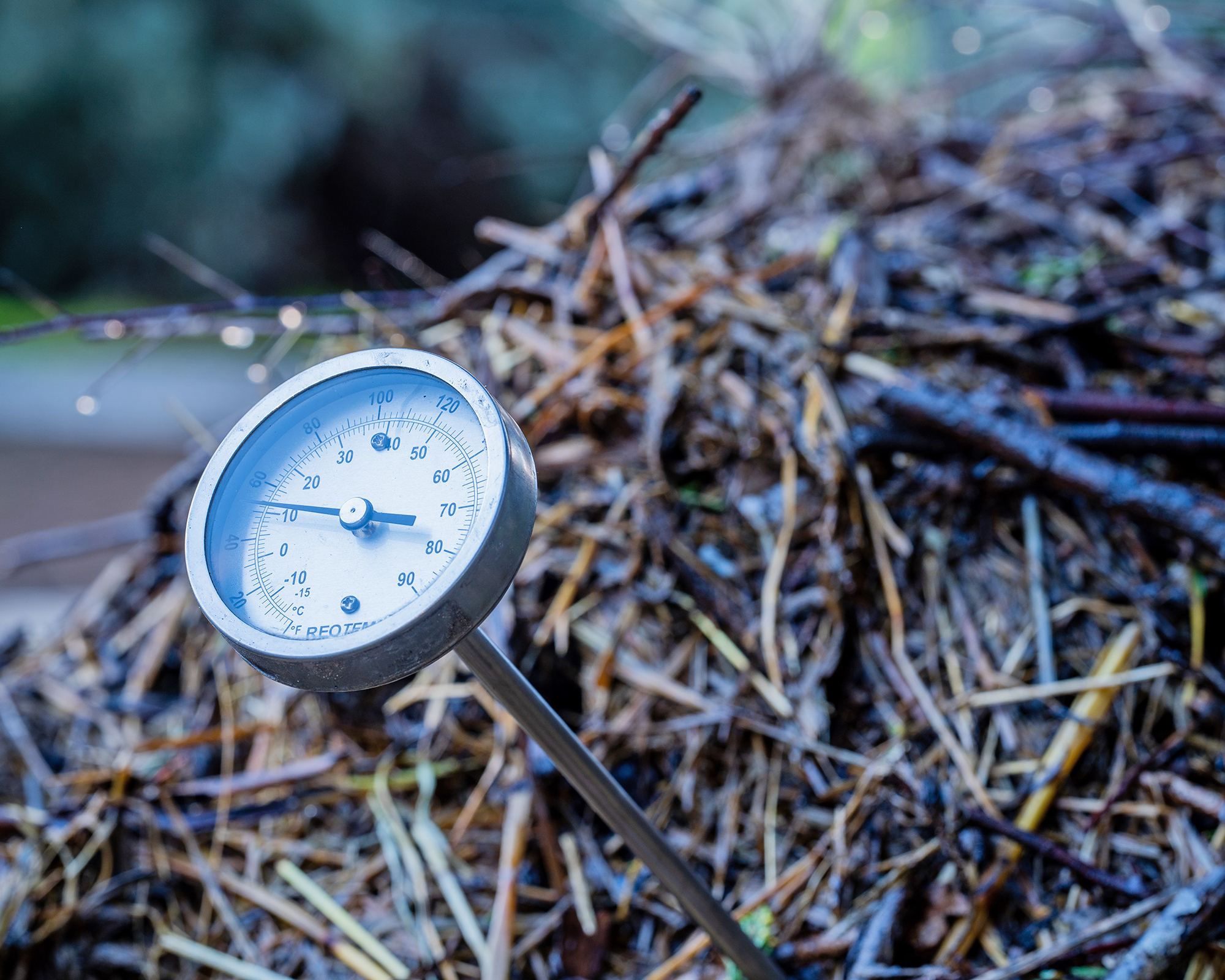
3. Bugs in Compost
It depends on what kind of insects you are finding in the compost as to whether it is a problem. Some bugs in compost, such as fruit flies, fungus gnats, and slugs, are normal. The fruit flies are seeking fruit or vegetable remnants. If their presence is annoying, try burying the fruit scraps deeper in the center of the pile. Both fruit flies and fungus gnats are attracted to moisture so the pile may be too wet. Add more carbon materials and turn the pile to air it out. If you see a lot of fungus gnats in the finished compost, let it dry out in the sun before using it.
Flies buzzing around compost may indicate inappropriate material such as meat, bones, dairy, grease, or fat. Bury the scraps further down in the center of the pile and refrain from adding them in the future.
Flies in compost may also be black soldier flies, the larvae of which are highly beneficial to the compost and do not carry disease.
Pillbugs and sowbugs may invade the pile, and they don’t harm the compost itself, but sowbugs could munch on emerging vegetable leaves and roots if they make it to the garden in compost. Send them packing by heating up the compost pile above 120°F (49°C).
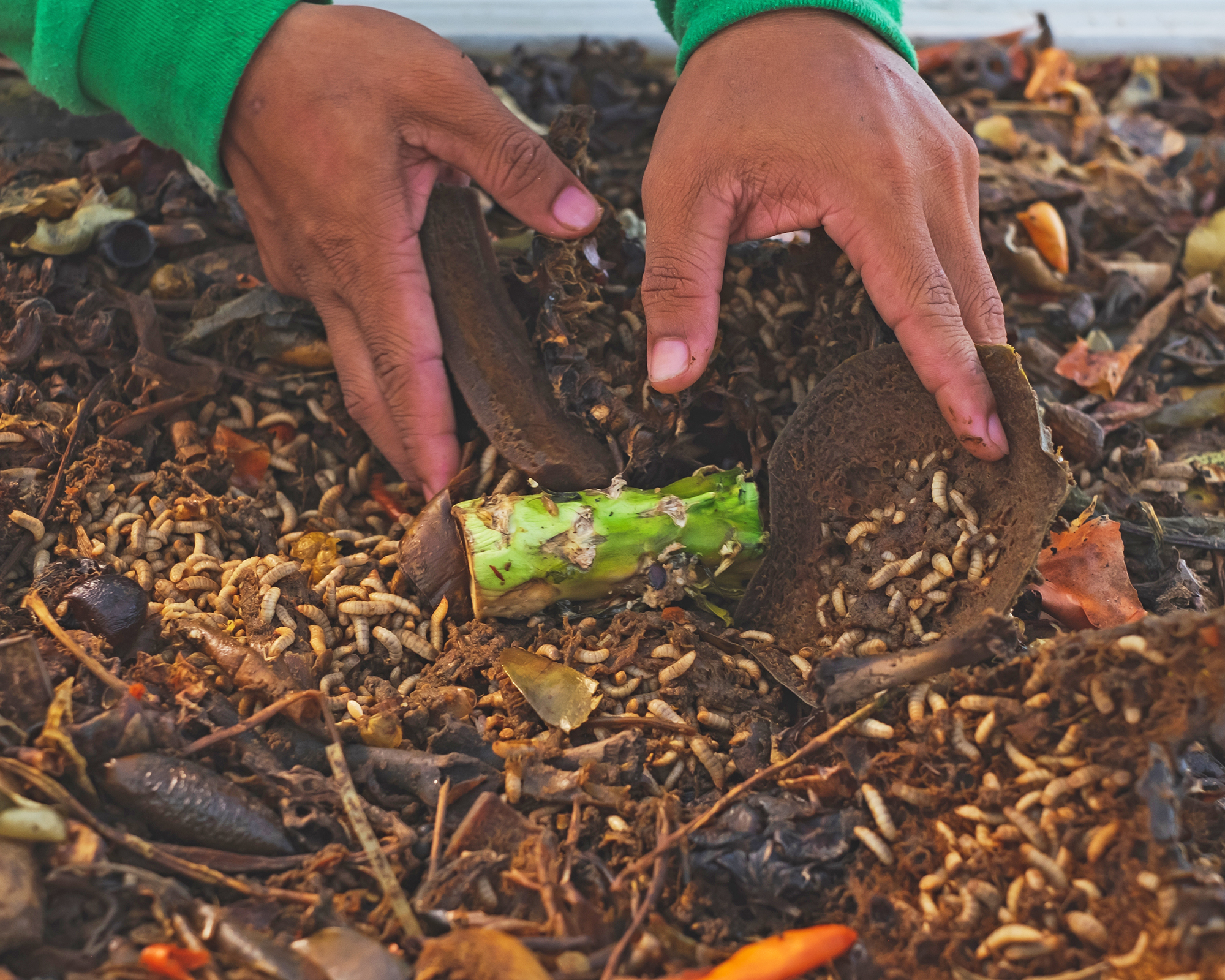
4. Pot Worms
Pot worms are small, clear worms that function similarly to earthworms. Because of their tiny size, they consume bacterial and fungal materials as well as excretions from other soil dwellers. While moving along the soil, they help aerate the soil as well as contribute humus to the soil.
If potworms become bothersome in the compost, reduce the amount of water in the pile.
5. Vegetables Growing in Compost Pile
You may notice seedlings growing in the unfinished compost from vegetable or weed seeds that were not destroyed during the heating phase. If you recognize vegetables growing in the compost pile as prized seedlings, go ahead and move them to the garden to grow.
Weed seedlings can be pulled and thrown on the unfinished compost pile because they do not carry weed seeds at this stage.
6. Pile Attracts Animals
If rodents, dogs, raccoons, and other unwanted animals are sniffing around your compost heap, they are scenting meat, bones, dairy products, fats, or other undesirables in the compost pile. Bury the scraps deep in the center of the pile, but it is best not to add them at all. If you live in bear country, do not even add vegetable scraps to the compost pile.
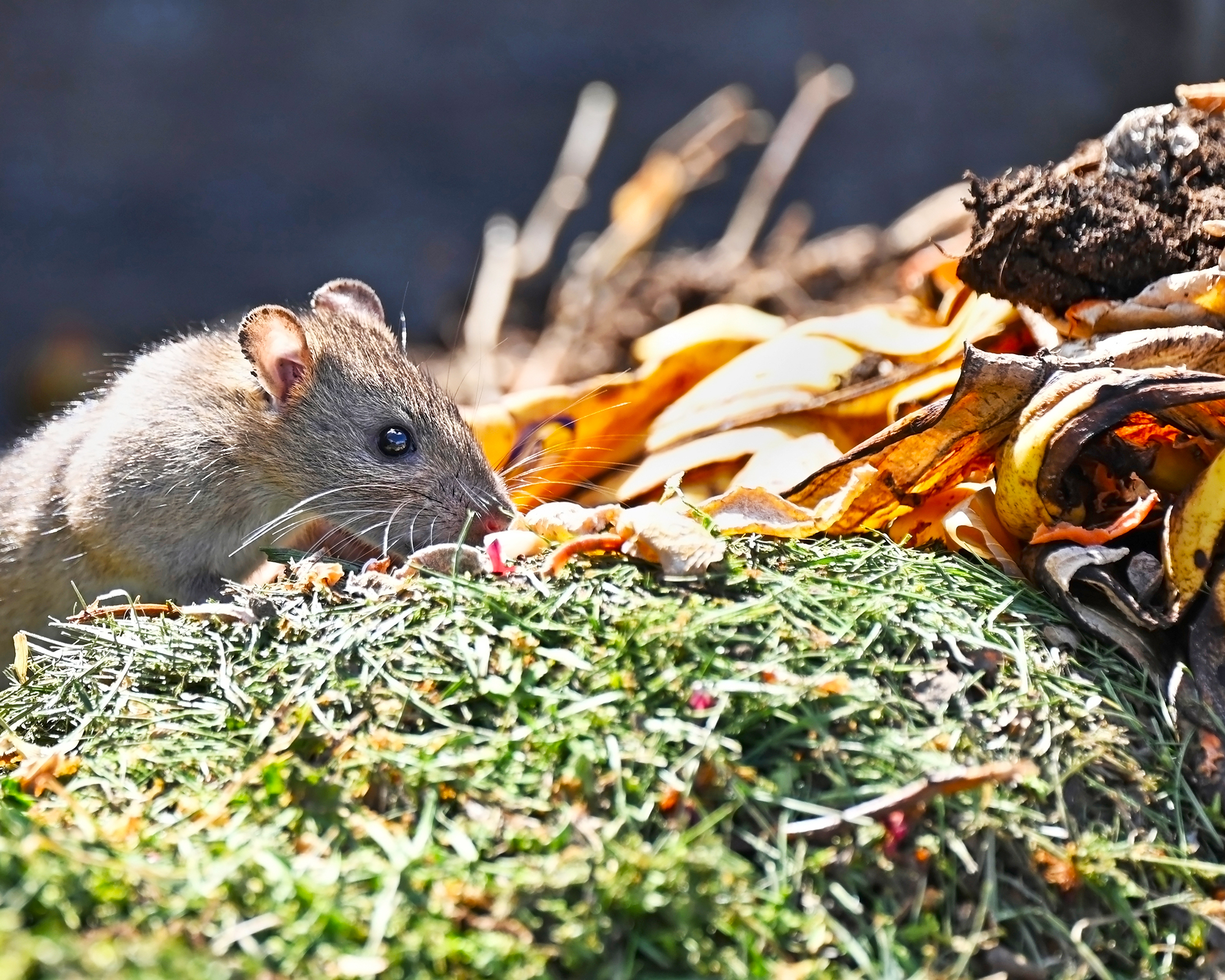
7. Leaves or Grass Clippings Not Decomposing
If the leaves or grass were added in a heap it probably has matted down. Turn the pile to mix them in and they will soon start decomposing. When adding a large amount of material, chop it up fine and turn the pile to mix it.
8. Dry Compost Pile
If the pile does not have enough moisture, it won’t heat up. It also may move to anaerobic activity instead of aerobic. Add water to the pile alternately while turning to thoroughly rewet the pile. It should always be moist. When rain is absent, be sure to water the pile regularly.
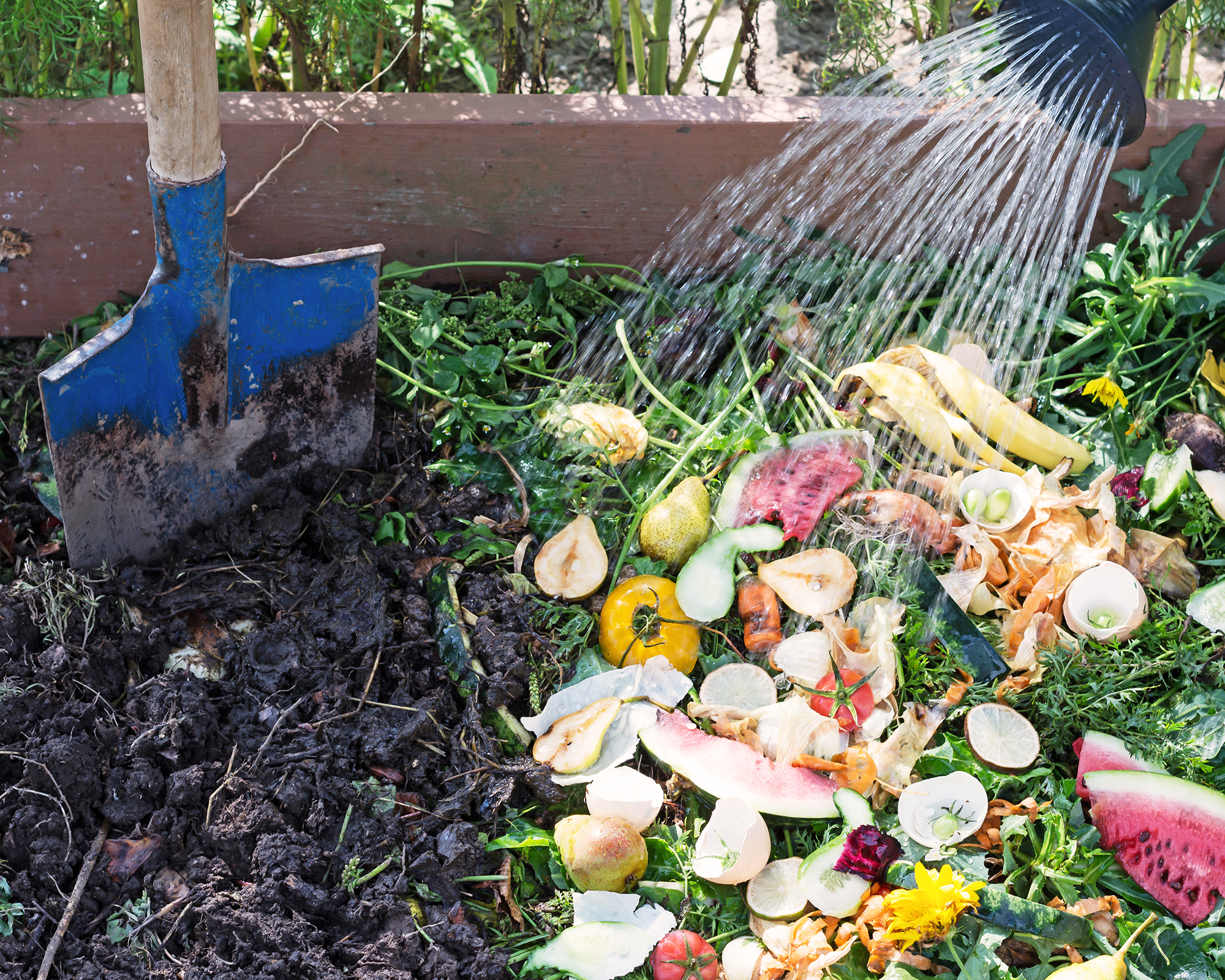
9. Compost Fungus
You may be startled to see a yellow slime mold growing in your compost bin, but it is harmless. Many types of compost fungi help break down debris along with billions of microorganisms.
10. Unable to Turn Pile
There is no shame in neglecting to turn the pile. Many experts recommend turning compost two to four times a month. But it is hard work, and many people are physically unable to turn it or do not have the time. Never fear, you can still have compost, but it will take longer.
Help your “cold” composting along by making sure everything you add is chopped up into fine pieces, and mix the greens and browns together while building it up. Water as you go and continue to keep the pile moist. Don’t forget to sprinkle a few handfuls of soil or compost on top to get the microorganisms working!
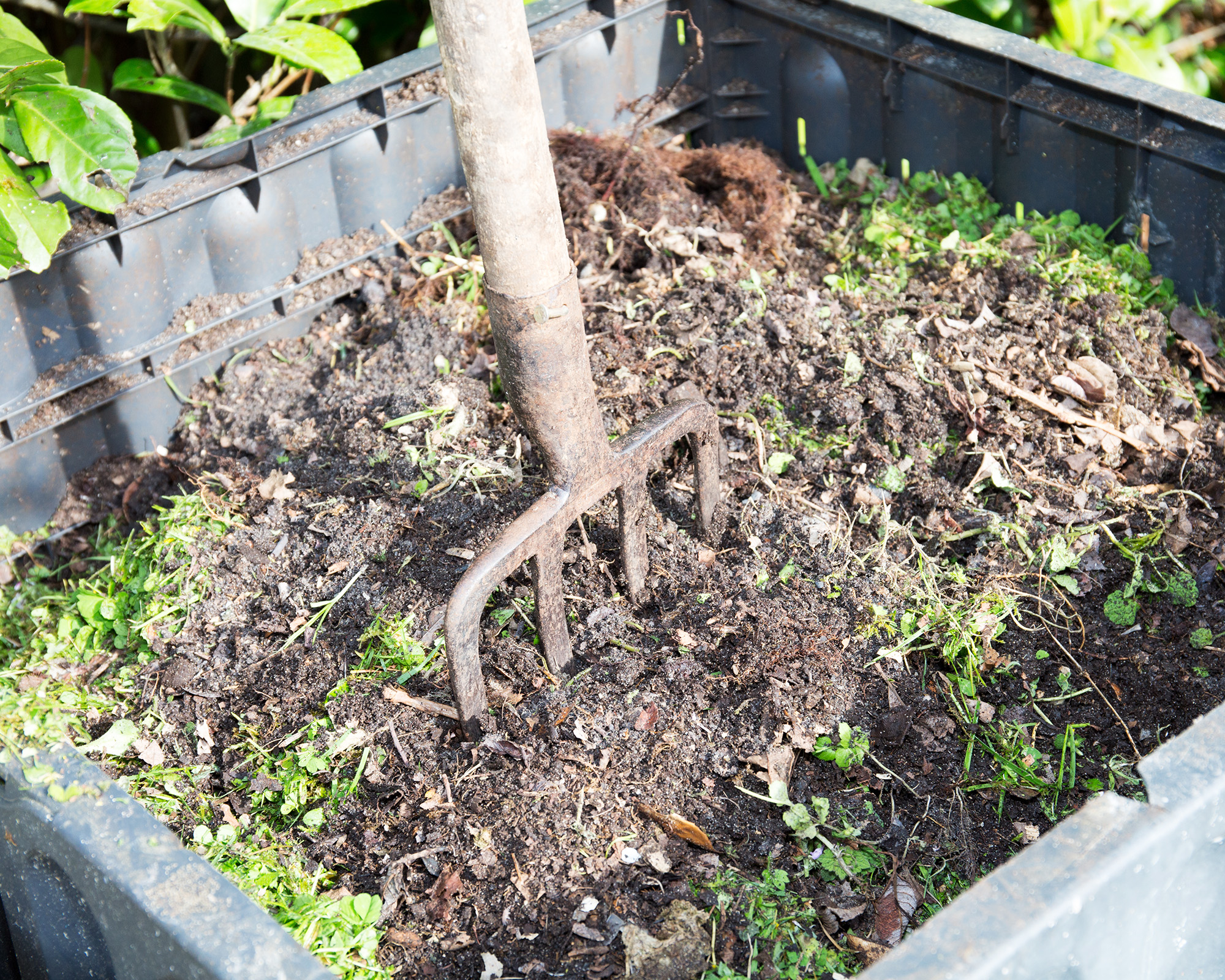
Composting Tips
If you are a beginning composter, there are a few basics you need to know to get cooking. Pick a corner of the yard where you can start a compost bin or pile. Ideally it needs to be close to a water source. By creating layers of waste – carbon material (browns) and nitrogen material (greens) – you can speed up the decomposition process and turn plant material into organic material in just a few months.
Examples of browns are dry leaves, shredded newspaper, non-corrugated cardboard, sawdust, dry grass, woody prunings (chopped), straw, and pine needles. Examples of greens are fruit and vegetable waste, grass clippings (unless herbicides applied in the last few weeks), coffee grounds, coffee filters, tea bags, and livestock manure.
Start the pile with a layer of sticks on the ground for ventilation, then alternate layers of browns and greens to a height of 3 feet (90cm). When the layers are complete, add a couple of handfuls of garden soil to introduce the microorganisms. That’s it!
Keep the pile moist, but not overly wet. If a lot of rain is forecast, you can cover the pile with a tarp. Then, to keep the pile oxygenated, turn the pile with a shovel or pitchfork every three to four weeks. The pile should heat up, but if it doesn’t, add more greens or water.
It takes some trial and error, but even if you don’t ever turn the pile or add water, it will still compost, but it may take a year or more.
More Composting Inspiration
- Discover 4 superfast composting methods to turn waste into garden gold in 30 days or less.
- Are electric composters the future of sustainability? Learn all about them in our guide to countertop food recycling.
- Visit our Sustainability Shop to find everything you need to create a more eco-friendly garden.
- Make a compost bin on a budget with these 7 easy DIY projects for beginners.
- Sign up for the Gardening Know How Newsletter for regular expert advice and exclusive offers.
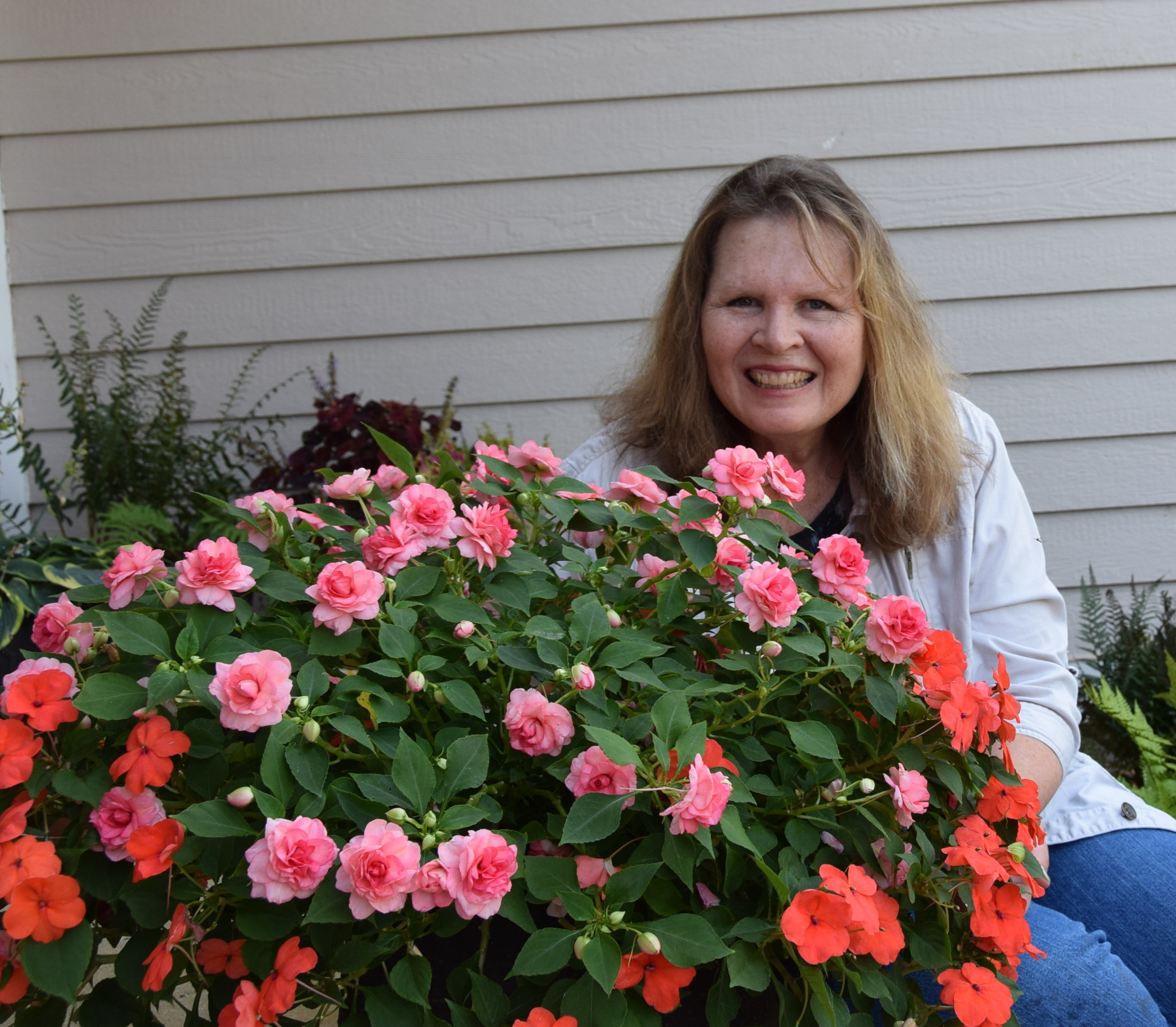
After graduating from Oklahoma State University with a degree in English, Susan pursued a career in communications. In addition, she wrote garden articles for magazines and authored a newspaper gardening column for many years. She contributed South-Central regional gardening columns for four years to Lowes.com. While living in Oklahoma, she served as a master gardener for 17 years.
